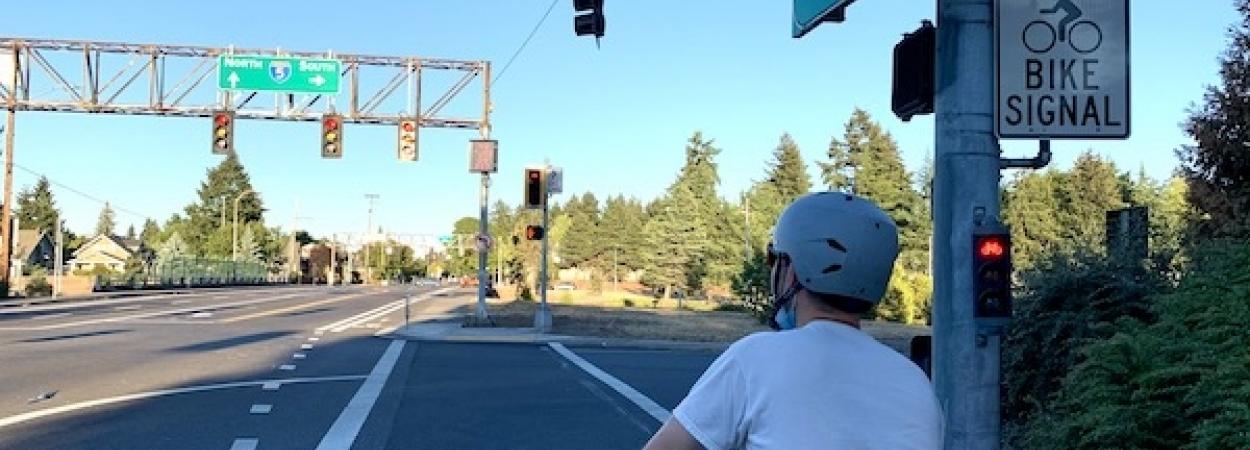Sponsor: National Cooperative Highway Research Program (NCHRP)
Research Team Lead: Christina Fink, Toole Design Group
Portland State Investigators: Christopher Monsere, Nathan McNeil and Sirisha Kothuri
One of the most common locations for motor vehicle-bicyclist crashes is at controlled intersections. Particularly dangerous is the conflict between through bicyclists and turning drivers (either left or right). Despite widespread acknowledgement of this problem, transportation engineers and planners still lack definitive guidance on how to safely and effectively design for bicyclists at intersections in the United States.
In a newly contracted project, awarded to Toole Design Group by the National Cooperative Highway Research Program (NCHRP), a team of researchers will identify design best practices to reduce conflicts at intersections. In addition to Toole, the team includes researchers from Portland State University, Oregon State University (David Hurwitz), and Safe Streets Research & Consulting (Rebecca Sanders). Christopher Monsere, Nathan McNeil and Sirisha Kothuri are the PSU team members.
Check out a related research project led by Monsere: Contextual Guidance at Intersections for Protected Bicycle Lanes.
Relatedly, this same team of PSU researchers has joined a second contract lead by TTI: NCHRP 15-74 Safety Evaluation of On-Street Bicycle Facility Design Features.
THE ISSUE
Design practices that simply drop bicycle pavement markings and signs at intersections, providing no positioning guidance for motorists or bicyclists, can lead to confusion over who has the right-of-way. Some jurisdictions continue bicycle lane markings all the way through intersections; in others, the lanes are dashed. Moreover, a variety of innovative treatments including bike boxes, the use of color, bicycle signals, and separated crossings are being used in different combinations and applications across the country. The variability of intersection design has resulted in design guidance which does not provide specific thresholds for selecting bikeway treatments.
This project seeks to remedy that by coming up with specific design guidance for transportation practitioners to use in reducing turning conflicts between motor vehicles and bicycles at controlled intersections.
THE RESEARCH PLAN
After reviewing existing literature to synthesize the current state of the practice, the research team will interview practitioners to gain additional insight into current practices, and the criteria used to select design treatments for bicycle facilities at intersections. The team will then select a set of intersections to analyze more closely in terms of safety and operations.
The researchers plan to use three methods—crash analysis, conflict analysis, and human factors analysis (using a driving simulator)— in a tiered approach to examine bicycle safety. This will help clarify the relationship between key risk factors and various bicycle facility designs in varying intersection contexts, and ultimately disentangle these relationships in order to provide substantive guidance to practitioners.
The team will use their findings to develop a decision tool and design guidance, and will also create training materials to help practitioners make informed decisions.
TIMELINE
The research is just getting off the ground as of October 2020, and is expected to conclude in October 2023. To stay updated about its progress and learn findings from other PSU transportation research, subscribe to our monthly TREC newsletter.
The Transportation Research and Education Center (TREC) at Portland State University is home to the National Institute for Transportation and Communities (NITC), the Initiative for Bicycle and Pedestrian Innovation (IBPI), and other transportation programs. TREC produces research and tools for transportation decision makers, develops K-12 curriculum to expand the diversity and capacity of the workforce, and engages students and professionals through education.




